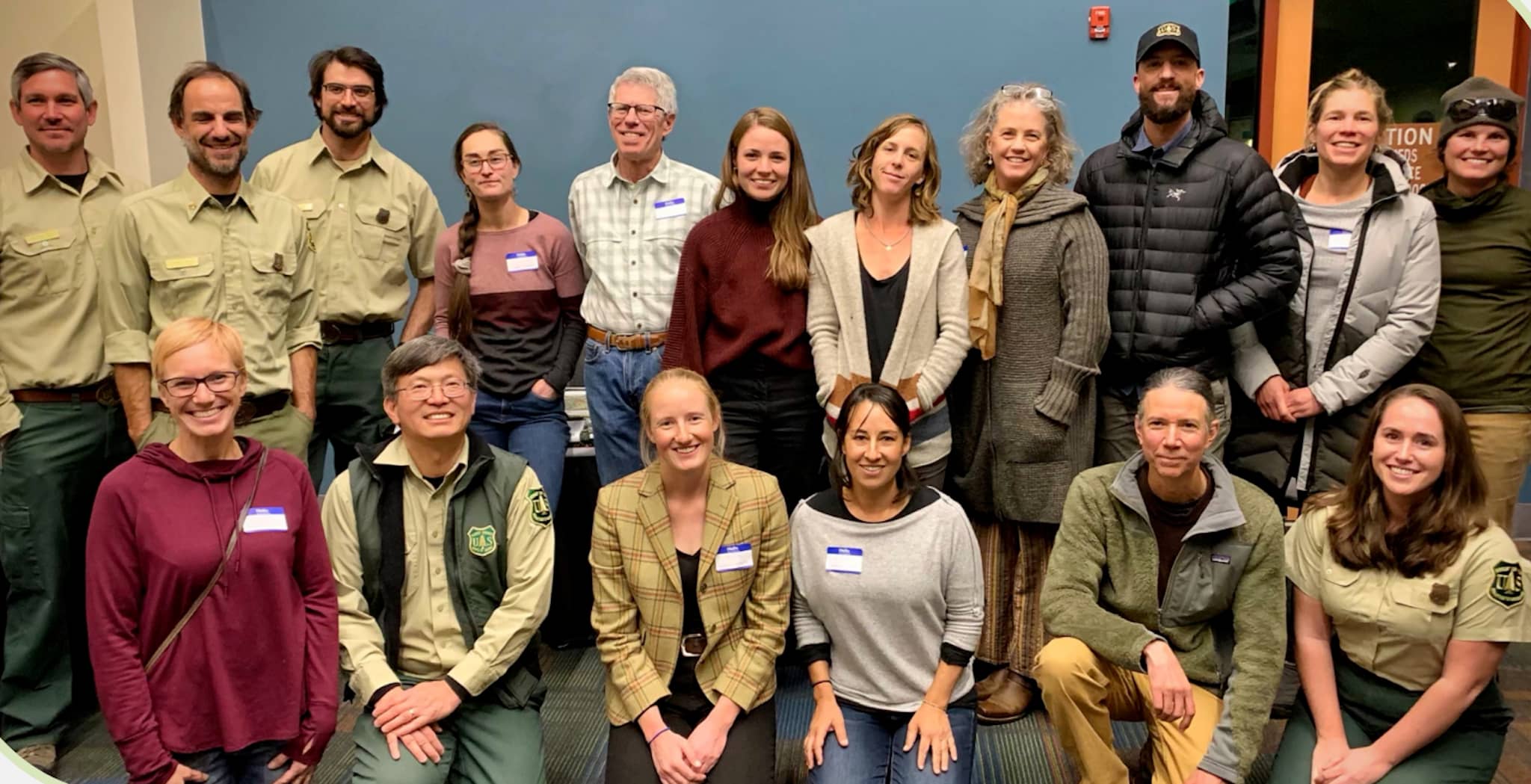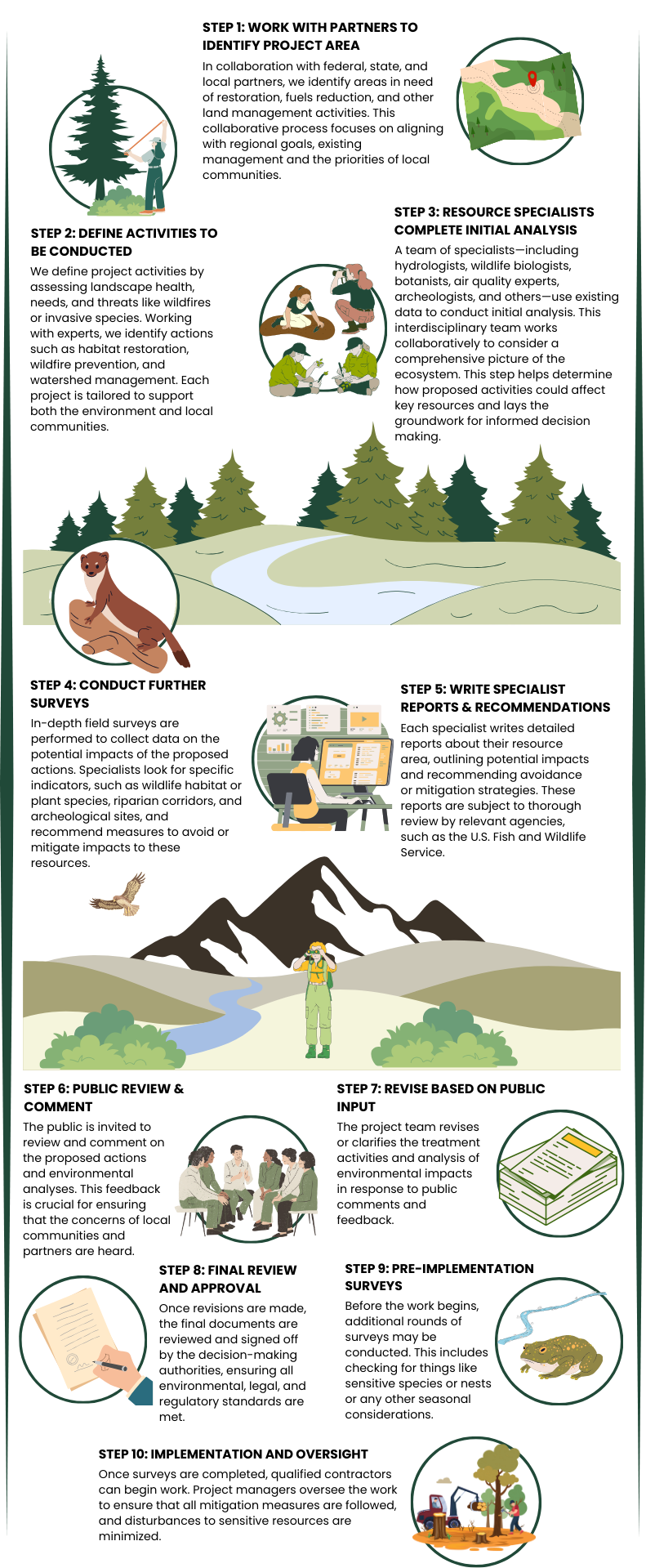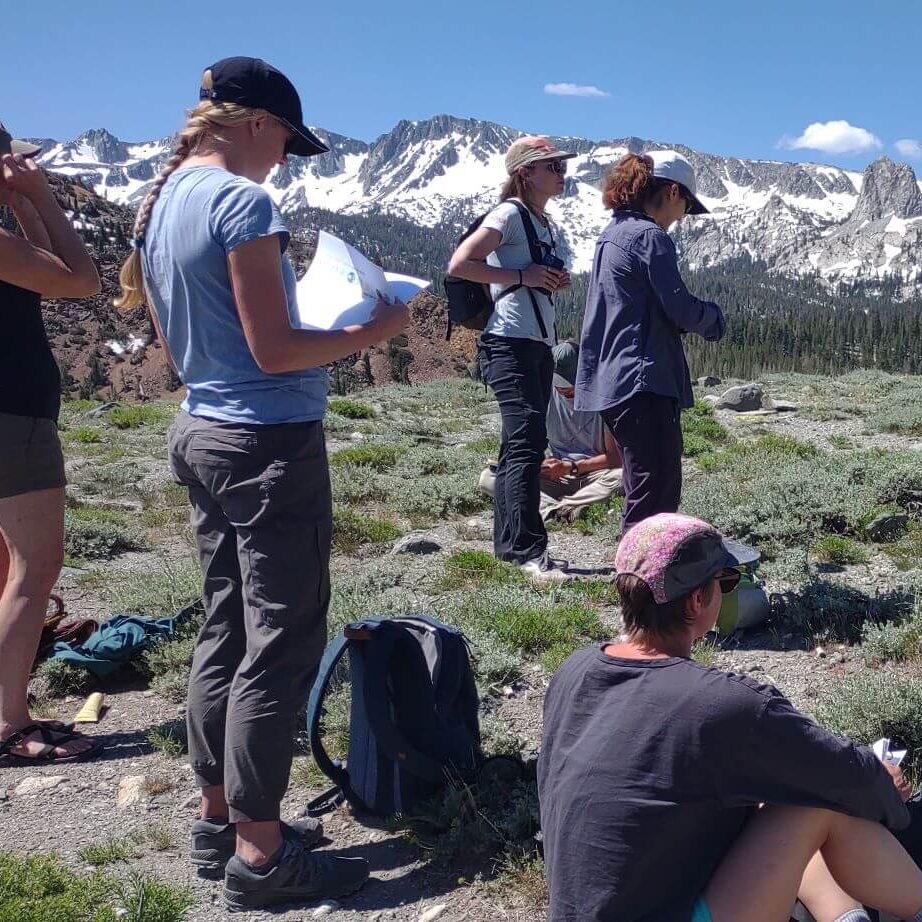Goals of Environmental Planning
Environmental planning is at the heart of responsible land management, ensuring that projects to reduce wildfire risks, restore ecosystems, or improve forest health are rooted in science, transparency, and community involvement. At its core, environmental planning involves several goals:
Understanding the Landscape
Conducting surveys to gather data on hydrology, wildlife, vegetation, air quality, and more.
Evaluating Impacts
Analyzing how proposed projects will affect the environment and identifying ways to mitigate harm.
Engaging the Community
Inviting public feedback to ensure decisions reflect local values and needs.
Making Decisions
Using science, policy, and public input to finalize project plans that balance environmental, social, and economic priorities.
Capacity Gaps in the Eastern Sierra
For years, the region has faced a lack of local resources to manage the complexities of environmental compliance. As a result, projects have often either relied on outside consultants with limited knowledge of our unique ecosystems or gone unsupported altogether. To address this, we have focused on building local capacity by developing a skilled team of environmental professionals who are deeply familiar with the region’s needs and challenges.

The Eastern Sierra Climate and Communities Resilience Project (ESCCRP) was our first major project aimed at closing this gap. Through the interdisciplinary team established for the ESCCRP, we worked with the Inyo National Forest to complete the necessary analyses and surveys required to satisfy NEPA requirements, supporting our federal partners in meeting the growing demands for large-scale restoration of public lands.
With this foundational experience, our team is now poised to carry forward the lessons learned and apply this expertise to future projects. We are committed to leveraging the knowledge gained from ESCCRP to support environmental planning needs for future enhancement of forest resilience and wildfire risk reduction.
How It Works: A Step-by-Step Overview



Dive Deeper
NEPA and CEQA
Whitebark Institute follows two processes—NEPA (National Environmental Policy Act) and CEQA (California Environmental Quality Act)—to ensure that our projects are environmentally responsible, legally compliant, and aligned with the values of the communities we serve.
National Environmental Policy Act (NEPA)
NEPA is a federal law that requires environmental reviews for projects that may affect the environment on federal land. The purpose of NEPA is to ensure that federal agencies consider the environmental consequences of their actions before making decisions, and disclose these consequences to the public.
California Environmental Quality Act (CEQA)
CEQA is a state-level law that requires California state and local agencies to evaluate the environmental impacts of projects before approval. The goal is to protect the state’s environment by considering both direct and indirect effects of proposed actions.

Why NEPA and CEQA Matter
Both NEPA and CEQA are crucial tools for ensuring that development projects and land management activities are conducted in an environmentally responsible manner. These processes:
- Ensure Scientific Rigor: They require comprehensive environmental analysis, supporting data-driven decisions.
- Encourage Transparency and Public Input: They ensure that communities have a voice in shaping decisions that impact them.
- Promote Sustainable Development: By carefully balancing environmental protection with development, NEPA and CEQA contribute to long-term resilience for both ecosystems and communities.
Learn More
Additional Resources
For more detailed information about the NEPA and CEQA processes, explore the following resources. We encourage you to stay informed and get involved! Together, we can help protect and restore the Eastern Sierra’s landscapes for future generations.
Learn more about NEPA
Learn how the Forest Service manages the NEPA process
Learn how and when citizens can participate in the NEPA process
Get information on the regulations behind CEQA


